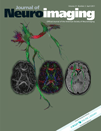Thrombolysis in Anterior Versus Posterior Circulation Strokes: Timing of Recanalization, Ischemic Tolerance, and Other Differences
J Neuroimaging 2011;21:108-112.
ABSTRACT
Previous studies have suggested a greater ischemic tolerance in posterior circulation as compared to anterior cerebral circulation. We aimed to investigate whether a differential response exists between anterior and posterior circulation strokes. Two hundred and four middle cerebral artery (MCA) patients and 28 basilar artery occlusion (BAO) patients treated with intravenous recombinant tissue plasminogen activator were included. Transcranial Doppler assessed recanalization at different time points. Patients were divided in three groups: total time of ischemia (TTI) <6, 6-24, or >24 hours. We calculated the percentage of recovery (admission National Institutes of Health Stroke Scale [NIHSS]– discharge NIHSS/admission NIHSS) × 100. Mean time to treatment was longer in BAO patients (P= .031). Early recanalization was more frequent among MCA occlusions (41% vs 29%; P= .039); the rate of persisting occlusion at 24 hours was similar (P= .933). Clinical recovery according to TTI was similar in each group: <6 hours: BAO 84%/MCA 69%; 6-24 hours: BAO 63%/MCA 61%; >24 hours: BAO −44%/MCA 11% (P= .23). For each hour of ischemia MCA patients worsened 1.78% (P= .035) and BAO 1.76% (P= .421). MCA occlusions compared to BAO were independently associated with hemorrhagic transformation (OR: 8.2; P= .043). Our data do not support the theory of increased ischemic tolerance in posterior circulation. Despite longer time-to-treatment, BAO were more resistant to hemorrhagic transformations.




